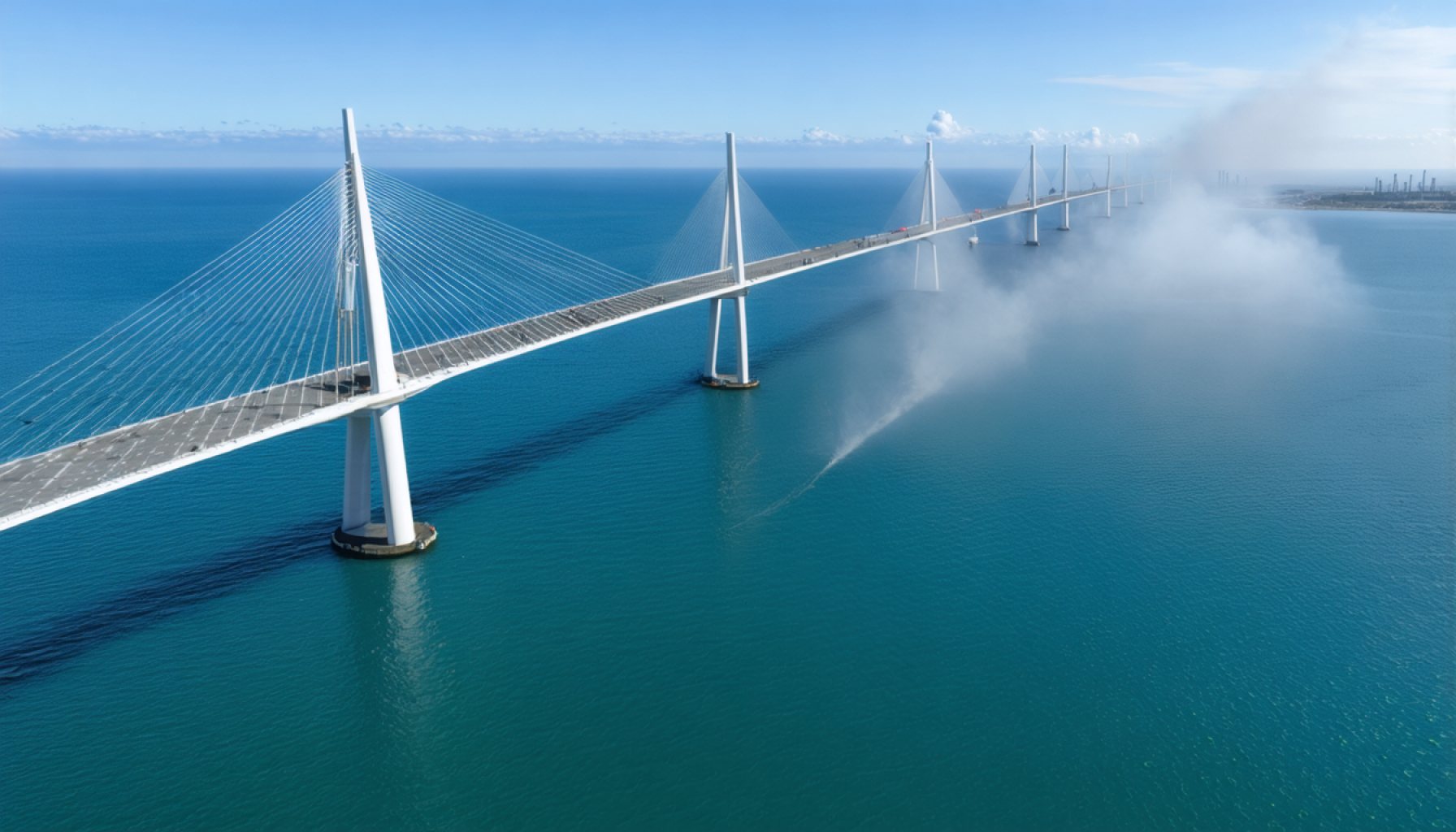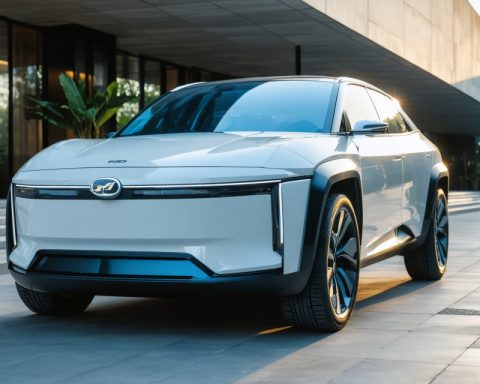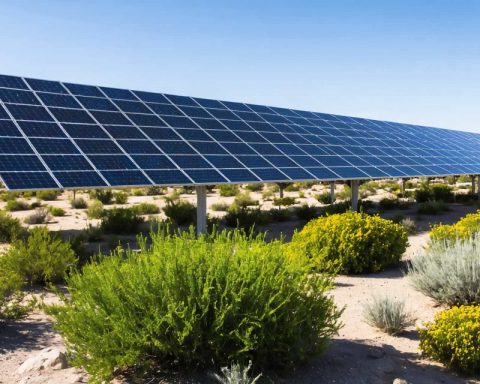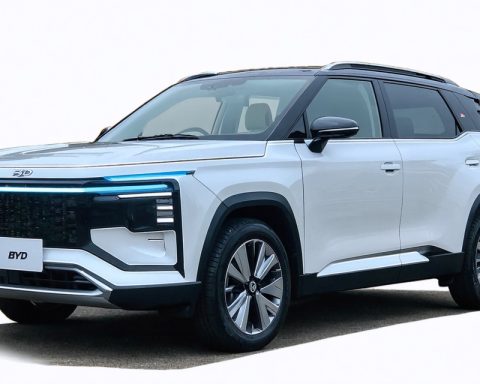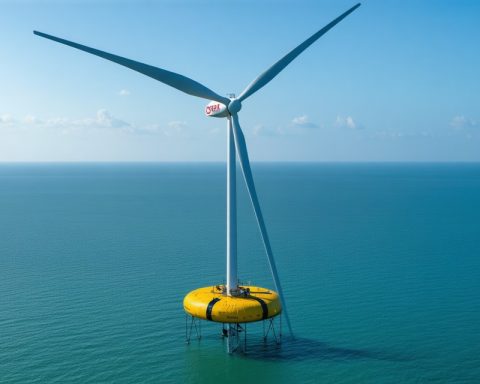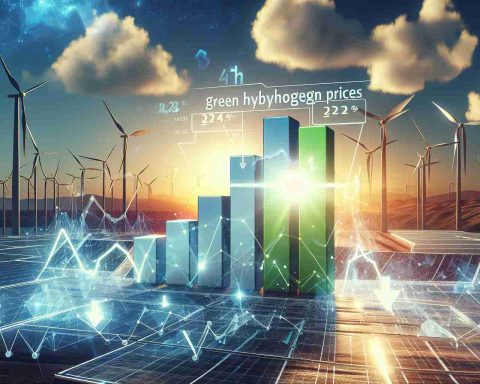- Saudi Arabia is developing a green energy bridge to Europe, using its vast solar resources to produce green hydrogen.
- ACWA Power’s CEO, Marco Arcelli, highlights the strategic importance of this energy corridor for Europe’s climate goals.
- The Neom 2,000 MW electrolysis plant will play a crucial role in transforming solar energy into green hydrogen.
- Arcelli believes the abundant sun and new technology make Saudi Arabia an ideal partner for Europe’s energy needs.
- The South H2 Corridor will extend 3,300 km, channeling North Africa’s hydrogen into Europe by 2030.
- This initiative promises to reduce Europe’s reliance on volatile gas markets and enhance industrial stability.
- The project signifies a vital multinational partnership to support Europe’s industrial and climate ambitions.
- Upon completion, millions of European households could benefit from this sustainable energy source.
Gliding over the sun-drenched deserts of Saudi Arabia, a tangible solution to Europe’s energy conundrum is taking shape. Beneath the relentless sun, the kingdom is crafting a future where Europe’s climate aspirations could find a much-needed ally. ACWA Power’s CEO, Marco Arcelli, envisions a bold bridge of green energy, linking the gleaming towers of Neom’s 2,000 MW electrolysis plant to Europe’s energy grid.
With the rhythmic churn of desert winds and the steady gleam of solar arrays, Saudi Arabia is poised to transform its boundless solar wealth into a river of green hydrogen. This new energy source promises stability in a world where geopolitical tensions often inflate gas prices. Arcelli, once a skeptic, now sees a cost-effective solution in these “three times the sun” regions. Here lies an opportunity that Europe cannot afford to dismiss—a chance to secure sustainable energy without over-relying on volatile gas markets.
As Europe grapples with space constraints for renewable sources, Arcelli’s vision offers not just energy but industrial stability. The ambitious South H2 Corridor, extending over 3,300 km, will channel North Africa’s hydrogen straight into the heart of Europe, tie an intercontinental knot between Saudi Arabia and cities like Milan, Vienna, and Berlin. Upon completion by 2030, millions of households could benefit from this sustainable energy highway.
But this bridge is more than a pathway. It embodies a partnership—a multinational cooperation poised to redefine global energy supply lines, secure Europe’s industrial future, and meet ambitious climate targets. In Saudi Arabia’s sands, the key to Europe’s green future glimmers under an eternal sun.
Unveiling the Future of Green Hydrogen: Europe’s Lifeline from the Arabian Desert
How-To Steps & Life Hacks
1. Understanding Green Hydrogen Production: Green hydrogen is produced by using renewable energy sources like solar or wind to power electrolysis, which splits water into hydrogen and oxygen. For a detailed understanding:
– Set up solar arrays for power generation.
– Implement electrolysis systems tailored to capacity.
– Establish storage solutions for hydrogen.
2. Integrating Hydrogen into Existing Energy Systems:
– Assess current infrastructure for compatibility.
– Develop transportation pipelines or utilize existing natural gas networks by adapting them for hydrogen.
– Install fuel cells for hydrogen conversion at endpoints to generate electricity.
Real-World Use Cases
– Decarbonizing Industry: Hydrogen can replace natural gas in industrial processes like steel manufacturing, significantly reducing carbon emissions.
– Transportation: Hydrogen fuel cells are increasingly used in buses, trucks, and trains, providing cleaner transportation solutions.
– Energy Storage: Hydrogen offers long-term energy storage capacity, stabilizing renewable energy supply across seasons.
Market Forecasts & Industry Trends
– Growing Market: The global green hydrogen market size is expected to reach $12 trillion by 2050 as per BloombergNEF. This growth is driven by government policies promoting low-emission technologies and investments in renewable energy infrastructure.
– Technology Advancements: Innovative electrolysis techniques and efficient storage solutions remain priorities for reducing production costs.
Features, Specs & Pricing
– Neom’s Electrolysis Plant: Expected capacity of 2,000 MW, making it one of the largest of its kind, with strategic setups focused on leveraging solar potential.
– Pricing: As technology matures, the cost of green hydrogen is projected to fall significantly, with some estimates suggesting prices as low as $1 per kg by 2030.
Reviews & Comparisons
– Hydrogen vs. Batteries: Hydrogen offers superior energy density and longer storage capabilities compared to traditional batteries, making it better suited for large-scale industrial applications.
Controversies & Limitations
– Water Consumption: Electrolysis consumes significant water, raising sustainability concerns, especially in arid regions. Innovative water recycling and desalination techniques are critical.
– Infrastructure Investment: High upfront costs for setting up production and transportation infrastructure remain a barrier.
Security & Sustainability
– Energy Security: By reducing dependency on fossil fuels and their volatile markets, hydrogen enhances energy security.
– Environmental Impact: Green hydrogen emits zero carbon dioxide during use, aligning with global climate targets.
Tutorials & Compatibility
– Installation of Electrolysis Systems: Tutorials can be found through industry leaders and academic institutions, ensuring safe and efficient setup and operation.
– Hydrogen in Existing Frameworks: Retrofitting existing gas networks for hydrogen use with minimal modifications can ease transition processes.
Pros & Cons Overview
– Pros: Sustainable, zero emissions, high energy return on energy invested.
– Cons: Requires significant infrastructure investment, water-intensive production processes.
Actionable Recommendations
– Invest in Renewable Infrastructure: Start small with solar or wind projects to power initial hydrogen trials.
– Pilot Green Hydrogen in Industries: Identify sectors with high emissions profiles for initial adoption of hydrogen solutions.
Green hydrogen offers a transformative path for achieving Europe’s climate goals while stabilizing energy supplies. By embracing this energy transition, both industry leaders and policymakers can drive substantial progress toward a sustainable future.
For more insights and information on renewable energy initiatives, visit ACWA Power.
